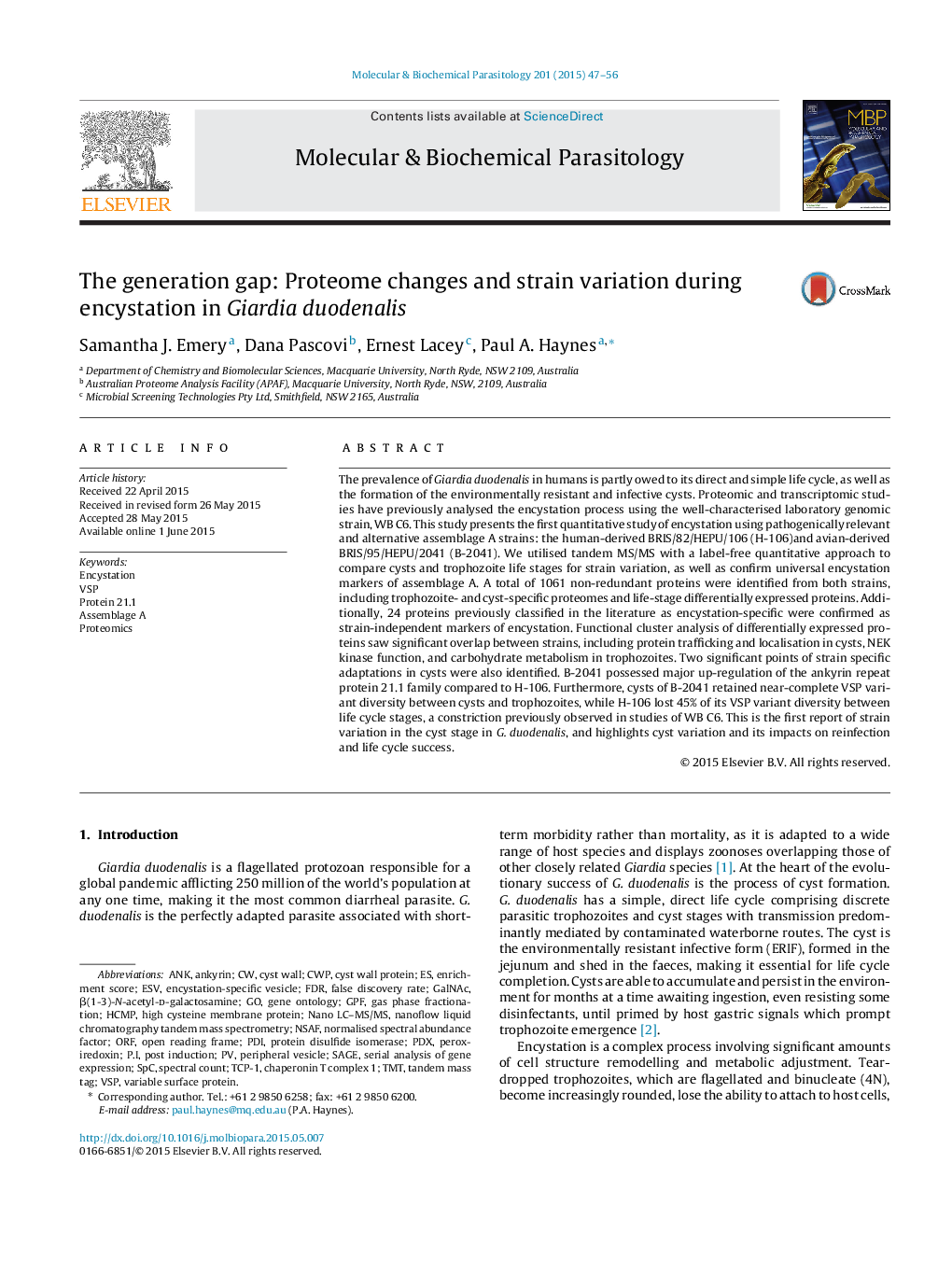| کد مقاله | کد نشریه | سال انتشار | مقاله انگلیسی | نسخه تمام متن |
|---|---|---|---|---|
| 5915331 | 1163280 | 2015 | 10 صفحه PDF | دانلود رایگان |
- First global analysis of encystation in Giardia beyond genome strain, WB.
- We analysed two alternative, pathogenically relevant assemblage A strains.
- We identified universal encystation markers which are strain-independent.
- Strain-specific adaptations occur with implication for reinfection and zoonoses.
The prevalence of Giardia duodenalis in humans is partly owed to its direct and simple life cycle, as well as the formation of the environmentally resistant and infective cysts. Proteomic and transcriptomic studies have previously analysed the encystation process using the well-characterised laboratory genomic strain, WB C6. This study presents the first quantitative study of encystation using pathogenically relevant and alternative assemblage A strains: the human-derived BRIS/82/HEPU/106 (H-106)and avian-derived BRIS/95/HEPU/2041 (B-2041). We utilised tandem MS/MS with a label-free quantitative approach to compare cysts and trophozoite life stages for strain variation, as well as confirm universal encystation markers of assemblage A. A total of 1061 non-redundant proteins were identified from both strains, including trophozoite- and cyst-specific proteomes and life-stage differentially expressed proteins. Additionally, 24 proteins previously classified in the literature as encystation-specific were confirmed as strain-independent markers of encystation. Functional cluster analysis of differentially expressed proteins saw significant overlap between strains, including protein trafficking and localisation in cysts, NEK kinase function, and carbohydrate metabolism in trophozoites. Two significant points of strain specific adaptations in cysts were also identified. B-2041 possessed major up-regulation of the ankyrin repeat protein 21.1 family compared to H-106. Furthermore, cysts of B-2041 retained near-complete VSP variant diversity between cysts and trophozoites, while H-106 lost 45% of its VSP variant diversity between life cycle stages, a constriction previously observed in studies of WB C6. This is the first report of strain variation in the cyst stage in G. duodenalis, and highlights cyst variation and its impacts on reinfection and life cycle success.
Journal: Molecular and Biochemical Parasitology - Volume 201, Issue 1, May 2015, Pages 47-56
